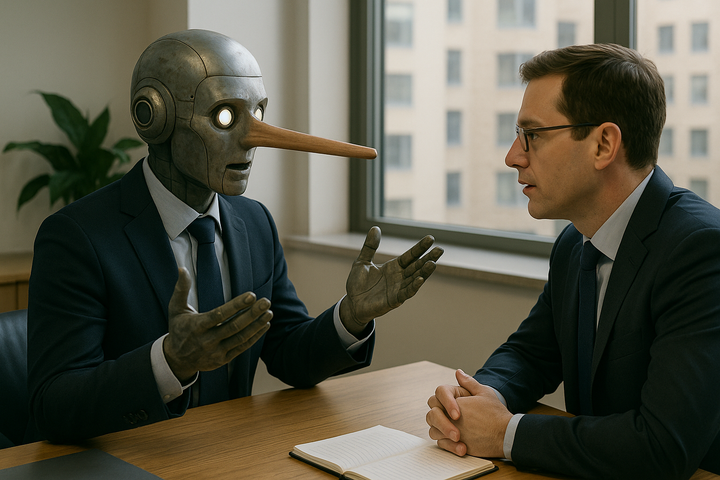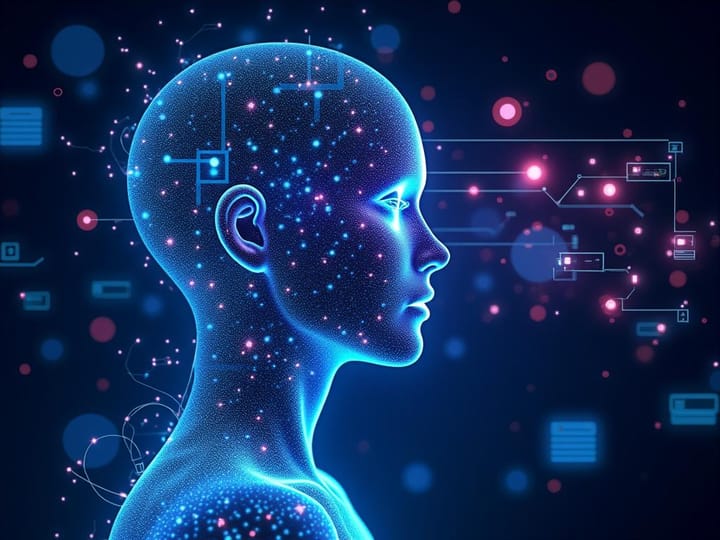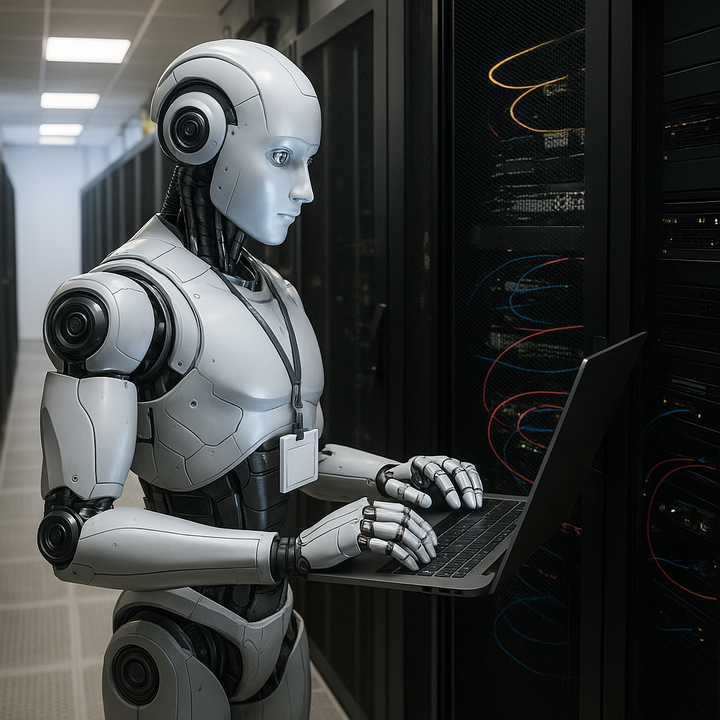AI Build or Buy? Don't Get Burned by Early Adoption
In the rapidly evolving AI landscape, companies face a crucial choice: build custom solutions or buy off-the-shelf products. This post explores the implications of both options, emphasizing strategic investment. By understanding costs and market dynamics, businesses can make smart decisions that ...

It seems like every company is talking about AI these days. The excitement is understandable – AI has the potential to transform how businesses operate. However, it's crucial to approach AI investment strategically. This isn't just about keeping up with the latest trends; it's about making smart decisions that actually benefit your business in the long run. And a big part of that is understanding the full cost of diving into AI, especially if you're thinking about building your own solutions.
The Big Decision: Build Your Own AI or Buy What's Already Out There?
When companies decide to use AI, they're faced with a fundamental choice: should they develop custom AI solutions tailored specifically to their needs, or should they purchase existing, off-the-shelf AI products? This "build vs. buy" dilemma isn't just a technical question. It has far-reaching implications for how you allocate your resources, how quickly you can implement AI, and ultimately, how successful your AI strategy will be.
Case Study: Is Building an AI Proposal Writer Really Worth It?
Let's imagine a consulting company that's considering a significant investment in building an AI-powered system to automate the creation of proposals and tender responses. On the surface, it seems like a great idea. Proposals are time-consuming, and AI could potentially save a lot of effort. But before they jump in, they need to ask themselves some tough questions:
- Is this a unique problem, or are other consulting firms (and businesses in general) struggling with the same proposal-writing challenges? If it's a common problem, chances are someone is already working on a solution.
- How likely is it that major AI providers like OpenAI or Anthropic will release their own proposal-writing tools in the near future? If a big player enters the market, the consulting company's custom-built solution could quickly become obsolete.
- Could the resources being poured into this AI project (money, time, personnel) be better spent on core business activities that directly contribute to their growth and profitability? This is about opportunity cost – what are they giving up by focusing on building AI?
The Hidden Costs of Jumping into AI Development Too Early

Source: SlideTeam - Build vs Buy Decision Management with Key Criteria
1. Opportunity Costs: What Else Could You Be Doing With Those Resources?
Developing AI solutions isn't cheap. It requires a substantial investment in several key areas:
- Highly skilled personnel: You need experienced AI developers, data scientists, and engineers. These professionals are in high demand and command high salaries. Their time spent building is time they cant spend on other business.
- Computing infrastructure: Training AI models requires significant computational power, which can involve hefty expenses for hardware, cloud services, and energy consumption.
- Training and implementation: Getting an AI system up and running takes time and effort. You need to collect and prepare data, train the model, and integrate it into your existing systems.
- Ongoing maintenance and updates: AI models need to be continuously monitored, updated, and retrained to maintain their accuracy and effectiveness. This ongoing maintenance adds to the overall cost.
2. The Market is Moving Fast: Are You Reinventing the Wheel?

Source: DivByZero - Build vs Buy Decision Illustration
The AI landscape is rapidly evolving. Many common business problems, the kind that many companies are trying to solve with custom AI, are already being addressed by specialized AI providers. Moreover, major tech companies are investing heavily in developing AI solutions for a wide range of business needs.
This means that if you decide to build your own AI solution for a problem that's already being tackled elsewhere, you might end up spending a lot of time and money on something that becomes redundant or outdated very quickly.
Why Buying Off-the-Shelf AI Solutions Can Be a Smarter Move
Pre-built AI solutions, often referred to as "off-the-shelf" solutions, offer several advantages, especially for businesses that are just starting their AI journey:
- Faster implementation: You can get up and running much more quickly with a ready-made solution compared to building something from scratch.
- Reduced development risks: Developing AI is complex and comes with inherent risks. Off-the-shelf solutions have already been tested and validated, reducing the risk of project failure.
- Lower initial investment: While there are costs associated with purchasing and integrating pre-built solutions, they are typically lower than the upfront investment required for custom development.
- Proven reliability: Established AI providers have a track record of delivering reliable and effective solutions.
- Regular updates and improvements: Reputable AI vendors continuously update and improve their products, ensuring that you have access to the latest features and advancements.
A Framework for Making the Right Decision
So, how do you decide whether to build or buy? Here's a simple framework to guide your decision-making process:
- Assess the Problem:
- Is this a generic problem that many businesses face, or is it something unique to your industry or company? The more common the problem, the more likely it is that a ready-made solution exists.
- Are there existing solutions available on the market? Thoroughly research the available options before committing to custom development.
- Evaluate Your Resources:
- What is the total cost of ownership for a custom-built solution? Consider not only the initial development costs but also the ongoing maintenance, updates, and potential need for future enhancements.
- What are the opportunity costs? What other valuable projects or initiatives might you have to delay or abandon if you focus on building AI?
- Analyze Your Core Competencies:
- Does building this AI solution align with your company's core strengths and expertise? If your business isn't fundamentally a technology company, your resources might be better spent elsewhere.
- Will this custom AI solution provide a sustainable competitive advantage? Or is it likely to be quickly matched or surpassed by competitors or readily available market solutions?
When to Build vs. When to Buy: A Quick Guide
Consider Building When:
- The problem you're trying to solve is truly unique to your business and hasn't been addressed by existing solutions.
- You have very specific requirements that cannot be met by any off-the-shelf product.
- Developing a custom AI solution will provide a clear and sustainable competitive advantage that is difficult for others to replicate.
- You have the necessary technical expertise, resources, and long-term commitment to support the development, implementation, and maintenance of the AI system.
Consider Buying When:
- The problem you're trying to solve is common across industries.
- Standard AI solutions already exist or are likely to emerge in the near future.
- The AI solution you need is not a core part of your company's competitive advantage.
- Your resources could be more effectively allocated to other areas of your business that directly contribute to your core competencies and growth.
Conclusion
Investing in AI is becoming increasingly important for businesses that want to remain competitive. However, the key to success lies in making informed and strategic decisions about how and when to invest. For many businesses, especially those whose core competency isn't technology, leveraging existing, off-the-shelf AI solutions often provides significantly better value than early investment in custom development. By carefully considering the factors outlined in this post, you can make a more informed decision about whether to build or buy AI, setting your business up for long-term success in the age of artificial intelligence.
Sources
[1]: "Building vs. Buying: Navigating the Generative AI Landscape"
[2]: "AI Development Cost In 2024: Real Examples And Trends"




Comments ()